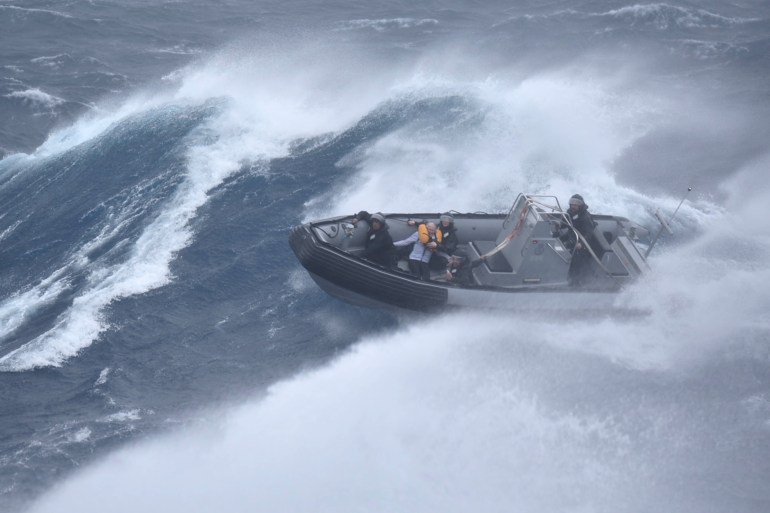Cyclone Gabrielle cut off towns, washed away houses and left people stranded on on rooftops.
Three people have been confirmed dead and thousands displaced in New Zealand after Cyclone Gabrielle brought widespread flooding and landslides to the northern part of the country.
Gabrielle, which reached New Zealand on Sunday before making its way down the east coast of the North Island, cut off entire towns, washed away farms, bridges and livestock, and inundated homes, stranding people on rooftops.
It was weakening and moving away on Wednesday.
“We thankfully are through the worst of the storm but we’re not out of danger yet,” Minister for Emergency Management Kieran McAnulty said during a televised media briefing.
“This is a significant disaster and is going to take many weeks for those areas most affected to recover … we are in this for the long haul.”
Among the dead were two people, including a volunteer firefighter, who were killed in landslides.
A third body was found in the badly-affected Hawke’s Bay on the east coast but authorities said the circumstances of that death remained unclear.
Residents in the worst-hit areas are being asked to conserve water and food because of fears of shortages. Gabrielle was the second large storm to hit the North Island in as many weeks with Auckland still recovering from torrential rain and floods that left four dead.
About three-quarters of New Zealand’s 5 million people live on the North Island.

Authorities estimate more than 10,000 people have been displaced so far.
A weather station in the Hawke’s Bay and Napier region recorded three times more rain over Monday night than usually falls during the entire month of February, authorities said. Gusts were reported at 140 km (87 miles) an hour.
More than 300 people were rescued from the area on Tuesday, including 60 stranded on a single roof, McAnulty said. Helicopters would help make the final 25 rescues of individuals and family groups on Wednesday.
Rivers in Hawke’s Bay continue to pose risks and local emergency management ordered further evacuations early on Wednesday. About 225,000 homes across the island are still without electricity.
Mother of four Jennie Perris, who lives on four hectares (10 acres) of land on the outskirts of Whangarei, about 170 km (106 miles) north of Auckland, said her family had been without power since Sunday.
Perris said the roads had cleared on Tuesday and the family had been able to head into the city and shower at her mother’s house, charge devices and stock up on bottled water, but was now back to cooking on the barbecue.
“We’re doing everything on it,” she said.

New Zealand declared a national emergency over the storm on Tuesday, only the third time it has ever done so.


